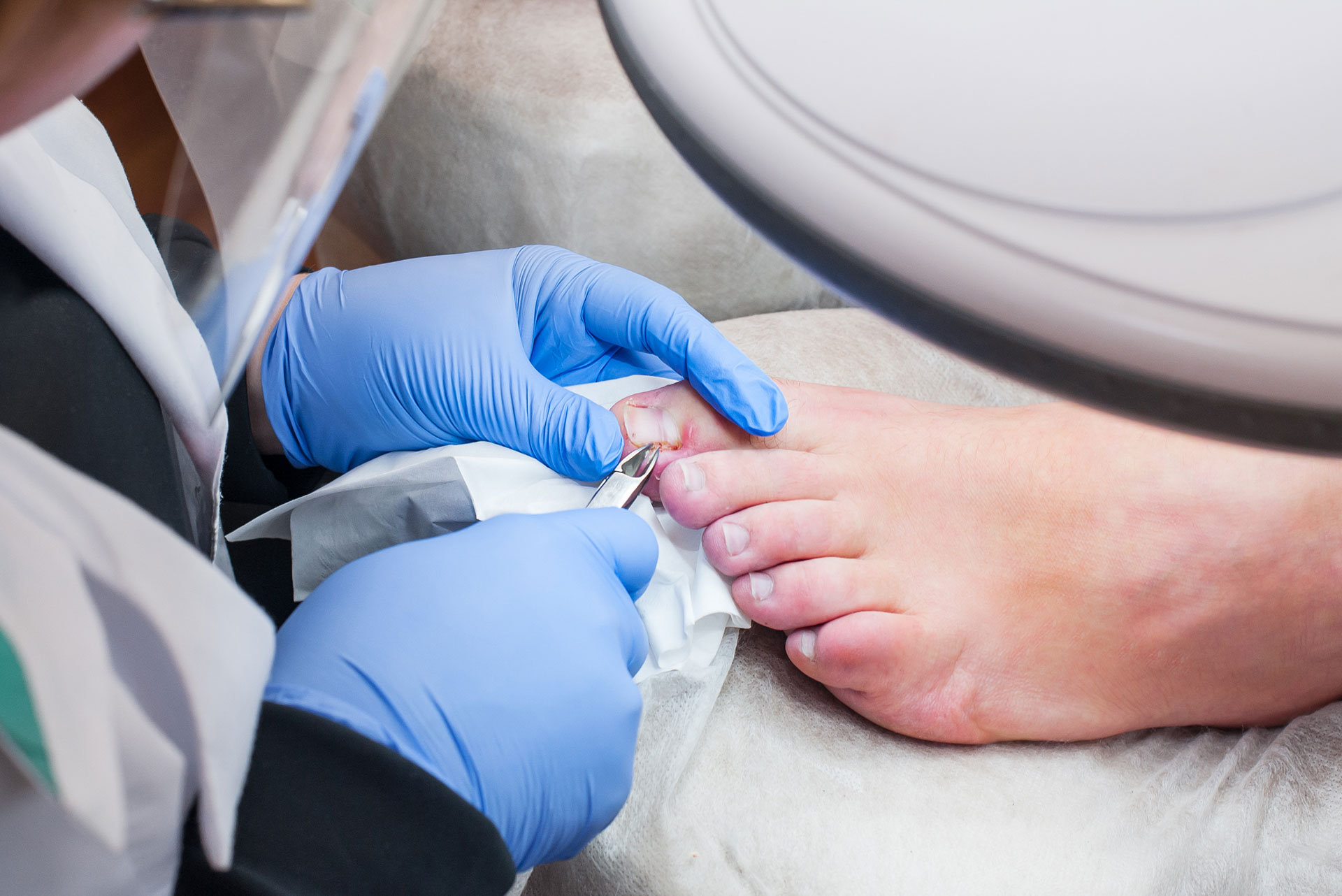
An ingrown toenail occurs when the edge of the toenail grows into and penetrates the underlying skin at the end of or side of the toe. While an ingrown toenail may not initially cause symptoms as it continues digging into the skin, it can produce increasing irritation, inflammation, redness and pain. An ingrown toenail can become so uncomfortable that wearing any shoes, other than ones with a wide, open toe may be impossible. With an ingrown toenail, extra skin, as well as other tissue, can begin to grow around the impinging portion of the nail. Furthermore, once the ingrown toenail penetrates the skin, an infection may develop with pus and worsening symptoms.
Common causes of ingrown toenails may include:
If you are suffering from an ingrown toenail, the safest approach is to see your podiatrist for professional guidance, diagnosis, and care. This advice holds true for everyone and is especially important if an infection is present, if you suffer from diabetes, have nerve damage in your feet, suffer from poor circulation, or have a compromised immune system.
The good news is that fixing most ingrown toenails and relieving the associated symptoms can be accomplished with a minor in-office procedure. The extent of the procedure depends upon the severity of the case, whether or not your ingrown toenail is a chronic problem, and if there are other contributing medical factors.
An ingrown toenail occurs when the edge of the nail grows into the surrounding skin, causing pain, redness, swelling, and sometimes infection. This condition most commonly affects the big toe but can occur on any toenail.
Several factors can contribute to ingrown toenails, including:
Common symptoms include:
You should seek professional care if you experience:
At Scott T. Grodman, DPM, PC, we offer several treatment options, depending on the severity of your condition. These include:
Treatment is generally well-tolerated, as we use local anesthesia to numb the affected area. Most patients feel relief almost immediately after the procedure.
To reduce the risk of developing ingrown toenails:
Yes! Ingrown toenails can affect people of all ages, including children. We provide gentle and effective treatment options for young patients to relieve discomfort and prevent complications.
Yes, most patients can walk immediately after treatment. However, we recommend wearing loose-fitting shoes and avoiding strenuous activities for a few days to promote healing.
If you’re experiencing pain from an ingrown toenail, we’re here to help. Contact Scott T. Grodman, DPM, PC in Taylor, MI, today by visiting podiatristintaylor-mi.com or calling our office at (313) 295-1620 to schedule your consultation.
